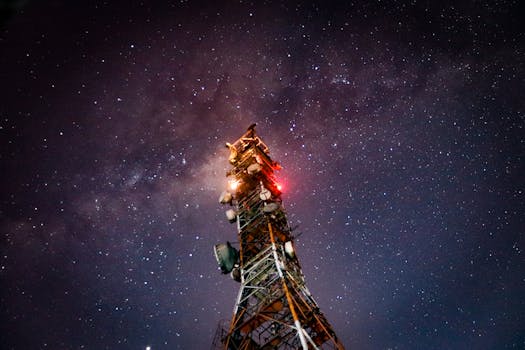
MEO Satellites: The Future of Global Communication
Medium Earth Orbit (MEO) satellites are revolutionizing the way we communicate globally. With their unique orbit and advanced technology, MEO satellites offer faster and more reliable connections than traditional Geostationary Orbit (GEO) satellites. In this article, we will delve into the world of MEO satellites, exploring their history, technology, and applications.
What are MEO Satellites?
MEO satellites are a type of satellite that orbits the Earth at an altitude of approximately 2,000 to 36,000 kilometers. This is much lower than GEO satellites, which orbit at an altitude of around 36,000 kilometers. The lower orbit of MEO satellites allows for faster signal transmission and reception, making them ideal for applications that require low latency and high-speed data transfer.
History of MEO Satellites
The concept of MEO satellites dates back to the 1990s, when the first MEO satellite systems were proposed. However, it wasn’t until the early 2000s that the first commercial MEO satellite systems were launched. One of the pioneers in MEO satellite technology is the O3b Networks, which launched its first satellites in 2013. Since then, several other companies have launched their own MEO satellite constellations, including SES, Intelsat, and OneWeb.
Technology and Applications
MEO satellites use advanced technology to provide high-speed and low-latency connections. They are equipped with sophisticated antennas and transponders that allow for efficient signal transmission and reception. MEO satellites are used in a variety of applications, including broadband internet, mobile broadband, and IoT connectivity. They are also used in emergency response situations, such as natural disasters, where traditional communication infrastructure is damaged or destroyed.
Benefits of MEO Satellites
MEO satellites offer several benefits over traditional GEO satellites. They provide faster signal transmission and reception, making them ideal for applications that require low latency. They also offer higher bandwidth and capacity, making them suitable for high-speed data transfer. Additionally, MEO satellites are more resistant to interference and jamming, making them a more secure option for critical communications.
Challenges and Limitations
Despite the benefits of MEO satellites, there are also challenges and limitations to their use. One of the main challenges is the high cost of launching and operating MEO satellites. They also require sophisticated ground equipment and infrastructure to operate effectively. Furthermore, MEO satellites are subject to interference from other satellites and terrestrial systems, which can impact their performance and reliability.
Conclusion
In conclusion, MEO satellites are revolutionizing the way we communicate globally. With their advanced technology and unique orbit, they offer faster and more reliable connections than traditional GEO satellites. As the demand for high-speed and low-latency connections continues to grow, MEO satellites are likely to play an increasingly important role in the future of global communication.






